Posted: April 8, 2015 | Author: Graham Smith | Filed under: 2015, MA PH Alumni Seminar, News | Tags: 2015, ; Hanna Hagmark-Cooper, Aland, Digital History, museums, musicology |
APRIL 9TH 6PM MOORE BUILDING MX-001
Dr Hanna Hagmark-Cooper:
From corner to community – Museums sharing authority in a Facebook world
Dr Hanna Hagmark- Cooper will talk about her work as the Director of the EMYA nominated Aland Maritime Museum as well as ‘Facebook as a way of collecting materials for museum exhibitions’.
 In April 2012 four men, all of whom had worked for the Gustaf Erikson (GE) shipping company, met up to plan and organise a summer get-together for former GE employees. As they exchanged memories and photos, they discovered an emotional need to collect stories and pictures from their past working lives (the 1950s onward). The men formed a Facebook group: ‘We who have been to sea in GE ships’. It proved to be immediately popular. Today the group has more than 550 members and still growing. In doing so, fulfilling a social necessity to re-member.
In April 2012 four men, all of whom had worked for the Gustaf Erikson (GE) shipping company, met up to plan and organise a summer get-together for former GE employees. As they exchanged memories and photos, they discovered an emotional need to collect stories and pictures from their past working lives (the 1950s onward). The men formed a Facebook group: ‘We who have been to sea in GE ships’. It proved to be immediately popular. Today the group has more than 550 members and still growing. In doing so, fulfilling a social necessity to re-member.
Members of the group post pictures from their time on board various GE ships: to date, more than 8,000 uploaded photographs. Information is exchanged about old friends, details of ships and ports. Together the members are creating a memory bank of life at sea in the second half of the 20th century. In doing so, they are meeting a historical need. The maritime historical records of Åland have very little on this period. Most of the existing material is concerned with the classic tall ships. Modern, engine-powered shipping is largely absent, in terms of objects, photos, archival material and stories.
In my capacity as director of Åland Maritime Museum, I was invited to join the group and survey the collected material. I was immediately struck by the significance of the collection. What made it particularly fascinating was that this was a story told from a crew perspective: ‘history from below’, if you like. The idea of an exhibition quickly formed and in 2013, as part of the 100th anniversary exhibition of the GE shipping company, Åland Maritime Museum produced an exhibition based on this collection. Members of the Facebook group co-curated the exhibition, which included not only a selection of photographs, but also the members’ commentary.
The exhibition was very popular and I believe serves as an example of how museum staff can work together with self-identifying groups in local communities, thereby sharing authority. While the paper will outline some of the challenges involved in cooperative working, I will demonstrate how museums through using social media can make otherwise marginalised histories available to wider audiences and how it can serve to place the museum at the heart of the community it seeks to represent. As a direct result of this cooperation, a new Åland project is now underway, in which a selection of the photographs will become part of the museum’s collection.
can work together with self-identifying groups in local communities, thereby sharing authority. While the paper will outline some of the challenges involved in cooperative working, I will demonstrate how museums through using social media can make otherwise marginalised histories available to wider audiences and how it can serve to place the museum at the heart of the community it seeks to represent. As a direct result of this cooperation, a new Åland project is now underway, in which a selection of the photographs will become part of the museum’s collection.
For more information about MA Public History Alumni seminars and activities, please contact: Dr Graham Smith.
Posted: March 20, 2015 | Author: mselimyavuz | Filed under: 2015 | Tags: 2015, doom metal, musicology |

Popular music history has been an oral one by popular music’s nature. Academic writing about popular music in general has been scarce until not more than thirty years ago. Considering this, it is not so unfathomable that extreme metal or more specifically doom metal has received much less attention from both academic and journalistic scholars/authors. I am planning to write about doom metal in oral history and potential uses of these sources in order to add this neglected genre of music to the popular music narrative.
What makes doom metal an interesting source of study is its apparent but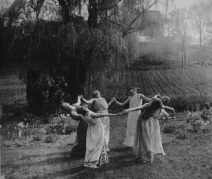 underexposed existence in metal music. While many consider Black Sabbath as one of the first heavy metal bands ever, not as many are not aware that the earliest examples of their music, which showed the clear break from a rock/hard rock tradition, belong to the doom metal aesthetic that developed heavily
underexposed existence in metal music. While many consider Black Sabbath as one of the first heavy metal bands ever, not as many are not aware that the earliest examples of their music, which showed the clear break from a rock/hard rock tradition, belong to the doom metal aesthetic that developed heavily
influenced by these albums.
There are many oral history sources about doom metal, even though the amount is not comparable to other metal genres. My essay will focus on these sources, the techniques they employ with comparisons to other genres, and it will discuss how these sources can further be used.
Posted: February 25, 2015 | Author: mselimyavuz | Filed under: 2015 | Tags: 2015, doom metal, hopes and concerns, influence, musicology, my dying bride |
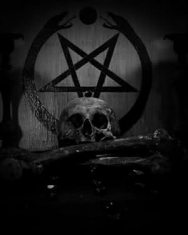 My main objective in doing this interview with Aaron Stainthorpe is learning about his ideas regarding his music making process and his thoughts on the doom metal genre. He is a very valuable musician, as I mentioned in my previous post, because My Dying Bride stands out as one of the first strands that diverge from a more traditional approach to metal music. I am also deeply concerned with the connection that he makes between his musical choices and significant events from his life story. This will help illuminate certain aspects of doom metal as a genre, and it will provide the first data in a larger scale research project. I am hoping to provide a sense of authenticity present among doom metal musicians regarding their music.
My main objective in doing this interview with Aaron Stainthorpe is learning about his ideas regarding his music making process and his thoughts on the doom metal genre. He is a very valuable musician, as I mentioned in my previous post, because My Dying Bride stands out as one of the first strands that diverge from a more traditional approach to metal music. I am also deeply concerned with the connection that he makes between his musical choices and significant events from his life story. This will help illuminate certain aspects of doom metal as a genre, and it will provide the first data in a larger scale research project. I am hoping to provide a sense of authenticity present among doom metal musicians regarding their music.
Another important aspect of the interview is hopefully going to be about influences. As the influences in metal music, starting from the early beginnings in 1970s but especially important after 1990s, appear to be historically connected along with literature, it will be interesting to hear Aaron’s thoughts on this influence, and I will try to learn more about his musical and extra-musical influences when he is thinking about the music of My Dying Bride. His ideas may also redirect the planned research i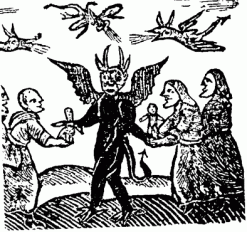 n another beneficial way.
n another beneficial way.
What concerns me most about this interview is the fact that Aaron has been interviewed many times. That is why I want to focus my interview a little bit more than a life story interview, as his life story can be heard from different types of media. Avoiding reiteration of the same information in a redundant way while avoiding the pitfalls of doing an interview within a paradigm that I belong to in one way or another will be the biggest challenge of this project.
Posted: January 28, 2015 | Author: mselimyavuz | Filed under: Uncategorized | Tags: 2015, doom metal, interview topic, musicology |
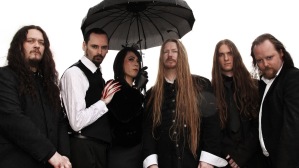 Interviews with influential people can be invaluable resources for investigating their ideas more intimately and focused, thus giving the opportunity to reach more informed conclusions in a research. Doom metal in the extreme metal paradigm, as opposed to traditional doom metal, being my current and planned future research topic, my idea for an interview is to conduct one with an influential musician whose music may be thought as showing this genre’s musical qualities.
Interviews with influential people can be invaluable resources for investigating their ideas more intimately and focused, thus giving the opportunity to reach more informed conclusions in a research. Doom metal in the extreme metal paradigm, as opposed to traditional doom metal, being my current and planned future research topic, my idea for an interview is to conduct one with an influential musician whose music may be thought as showing this genre’s musical qualities.
My Dying Bride is a band of UK origin, Bradford, West Yorkshire to be exact, that formed in 1989 (See O2backstagechat, My Dying Bride: Doom Metal Heroes, 2012). They released twelve albums, and currently working on their thirteenth. They are largely considered as one of the pioneering bands in the death doom metal subgenre, which represents one of the most important breakpoints from the traditional doom metal that began with Black Sabbath in the 1970s. Also, My Dying Bride’s music has been developing in the last three decades continuously, hence they remain an influence in the doom metal scene in general, especially death doom metal, and gothic doom metal subgenres. I hope to do an interview with the vocalist, songwriter, and one of the founding members of My Dying Bride, Aaron Stainthorpe.
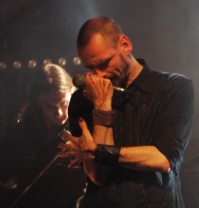 My involvement with doom metal scene in one or another goes back almost fifteen years, so this will present one of the challenges of conducting an interview within this scene. Reflexivity and the idea of autoethnography, while considering the crucial differences between ethnography and oral history, will be important issues to be considered. Another challenge specific to this interview will be not reiterating information that is already available. Because of My Dying Bride’s history, there are many interviews currently readily available around the Internet and other journalistic sources. Thus this interview will not solely be a life history interview, but an interview focusing on the musician and his musical ideas, acknowledging his life story in the relevant places, especially regarding the issues raised with the aid of applying affect theory into doom metal music making.
My involvement with doom metal scene in one or another goes back almost fifteen years, so this will present one of the challenges of conducting an interview within this scene. Reflexivity and the idea of autoethnography, while considering the crucial differences between ethnography and oral history, will be important issues to be considered. Another challenge specific to this interview will be not reiterating information that is already available. Because of My Dying Bride’s history, there are many interviews currently readily available around the Internet and other journalistic sources. Thus this interview will not solely be a life history interview, but an interview focusing on the musician and his musical ideas, acknowledging his life story in the relevant places, especially regarding the issues raised with the aid of applying affect theory into doom metal music making.
 In April 2012 four men, all of whom had worked for the Gustaf Erikson (GE) shipping company, met up to plan and organise a summer get-together for former GE employees. As they exchanged memories and photos, they discovered an emotional need to collect stories and pictures from their past working lives (the 1950s onward). The men formed a Facebook group: ‘We who have been to sea in GE ships’. It proved to be immediately popular. Today the group has more than 550 members and still growing. In doing so, fulfilling a social necessity to re-member.
In April 2012 four men, all of whom had worked for the Gustaf Erikson (GE) shipping company, met up to plan and organise a summer get-together for former GE employees. As they exchanged memories and photos, they discovered an emotional need to collect stories and pictures from their past working lives (the 1950s onward). The men formed a Facebook group: ‘We who have been to sea in GE ships’. It proved to be immediately popular. Today the group has more than 550 members and still growing. In doing so, fulfilling a social necessity to re-member. can work together with self-identifying groups in local communities, thereby sharing authority. While the paper will outline some of the challenges involved in cooperative working, I will demonstrate how museums through using social media can make otherwise marginalised histories available to wider audiences and how it can serve to place the museum at the heart of the community it seeks to represent. As a direct result of this cooperation, a new Åland project is now underway, in which a selection of the photographs will become part of the museum’s collection.
can work together with self-identifying groups in local communities, thereby sharing authority. While the paper will outline some of the challenges involved in cooperative working, I will demonstrate how museums through using social media can make otherwise marginalised histories available to wider audiences and how it can serve to place the museum at the heart of the community it seeks to represent. As a direct result of this cooperation, a new Åland project is now underway, in which a selection of the photographs will become part of the museum’s collection.
 underexposed existence in metal music. While many consider Black Sabbath as one of the first heavy metal bands ever, not as many are not aware that the earliest examples of their music, which showed the clear break from a rock/hard rock tradition, belong to the doom metal aesthetic that developed heavily
underexposed existence in metal music. While many consider Black Sabbath as one of the first heavy metal bands ever, not as many are not aware that the earliest examples of their music, which showed the clear break from a rock/hard rock tradition, belong to the doom metal aesthetic that developed heavily My main objective in doing this interview with Aaron Stainthorpe is learning about his ideas regarding his music making process and his thoughts on the doom metal genre. He is a very valuable musician, as I mentioned in my previous post, because My Dying Bride stands out as one of the first strands that diverge from a more traditional approach to metal music. I am also deeply concerned with the connection that he makes between his musical choices and significant events from his life story. This will help illuminate certain aspects of doom metal as a genre, and it will provide the first data in a larger scale research project. I am hoping to provide a sense of authenticity present among doom metal musicians regarding their music.
My main objective in doing this interview with Aaron Stainthorpe is learning about his ideas regarding his music making process and his thoughts on the doom metal genre. He is a very valuable musician, as I mentioned in my previous post, because My Dying Bride stands out as one of the first strands that diverge from a more traditional approach to metal music. I am also deeply concerned with the connection that he makes between his musical choices and significant events from his life story. This will help illuminate certain aspects of doom metal as a genre, and it will provide the first data in a larger scale research project. I am hoping to provide a sense of authenticity present among doom metal musicians regarding their music. n another beneficial way.
n another beneficial way. Interviews with influential people can be invaluable resources for investigating their ideas more intimately and focused, thus giving the opportunity to reach more informed conclusions in a research. Doom metal in the extreme metal paradigm, as opposed to traditional doom metal, being my current and planned future research topic, my idea for an interview is to conduct one with an influential musician whose music may be thought as showing this genre’s musical qualities.
Interviews with influential people can be invaluable resources for investigating their ideas more intimately and focused, thus giving the opportunity to reach more informed conclusions in a research. Doom metal in the extreme metal paradigm, as opposed to traditional doom metal, being my current and planned future research topic, my idea for an interview is to conduct one with an influential musician whose music may be thought as showing this genre’s musical qualities. My involvement with doom metal scene in one or another goes back almost fifteen years, so this will present one of the challenges of conducting an interview within this scene. Reflexivity and the idea of autoethnography, while considering the crucial differences between ethnography and oral history, will be important issues to be considered. Another challenge specific to this interview will be not reiterating information that is already available. Because of My Dying Bride’s history, there are many interviews currently readily available around the Internet and other journalistic sources. Thus this interview will not solely be a life history interview, but an interview focusing on the musician and his musical ideas, acknowledging his life story in the relevant places, especially regarding the issues raised with the aid of applying affect theory into doom metal music making.
My involvement with doom metal scene in one or another goes back almost fifteen years, so this will present one of the challenges of conducting an interview within this scene. Reflexivity and the idea of autoethnography, while considering the crucial differences between ethnography and oral history, will be important issues to be considered. Another challenge specific to this interview will be not reiterating information that is already available. Because of My Dying Bride’s history, there are many interviews currently readily available around the Internet and other journalistic sources. Thus this interview will not solely be a life history interview, but an interview focusing on the musician and his musical ideas, acknowledging his life story in the relevant places, especially regarding the issues raised with the aid of applying affect theory into doom metal music making.
Recent Comments